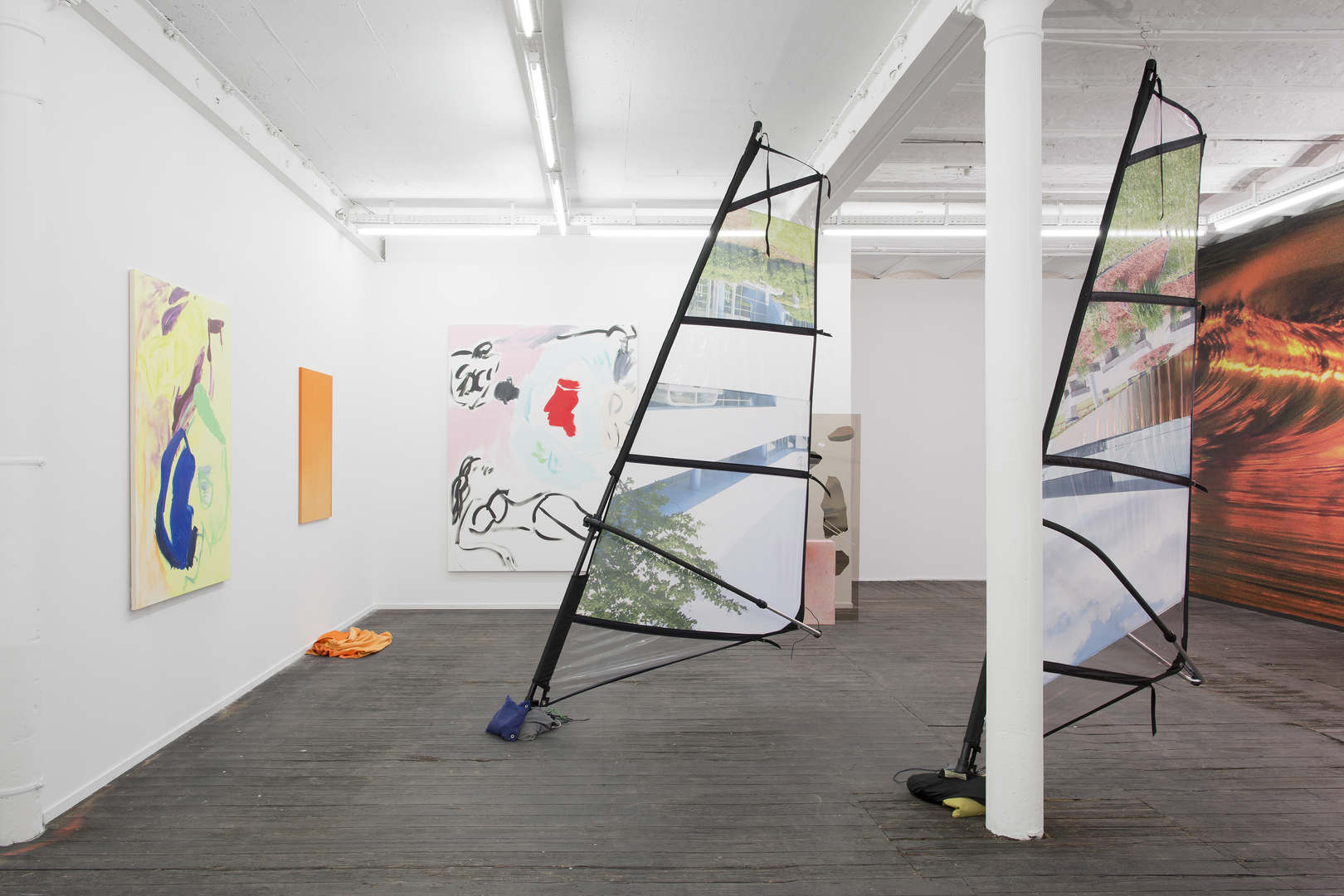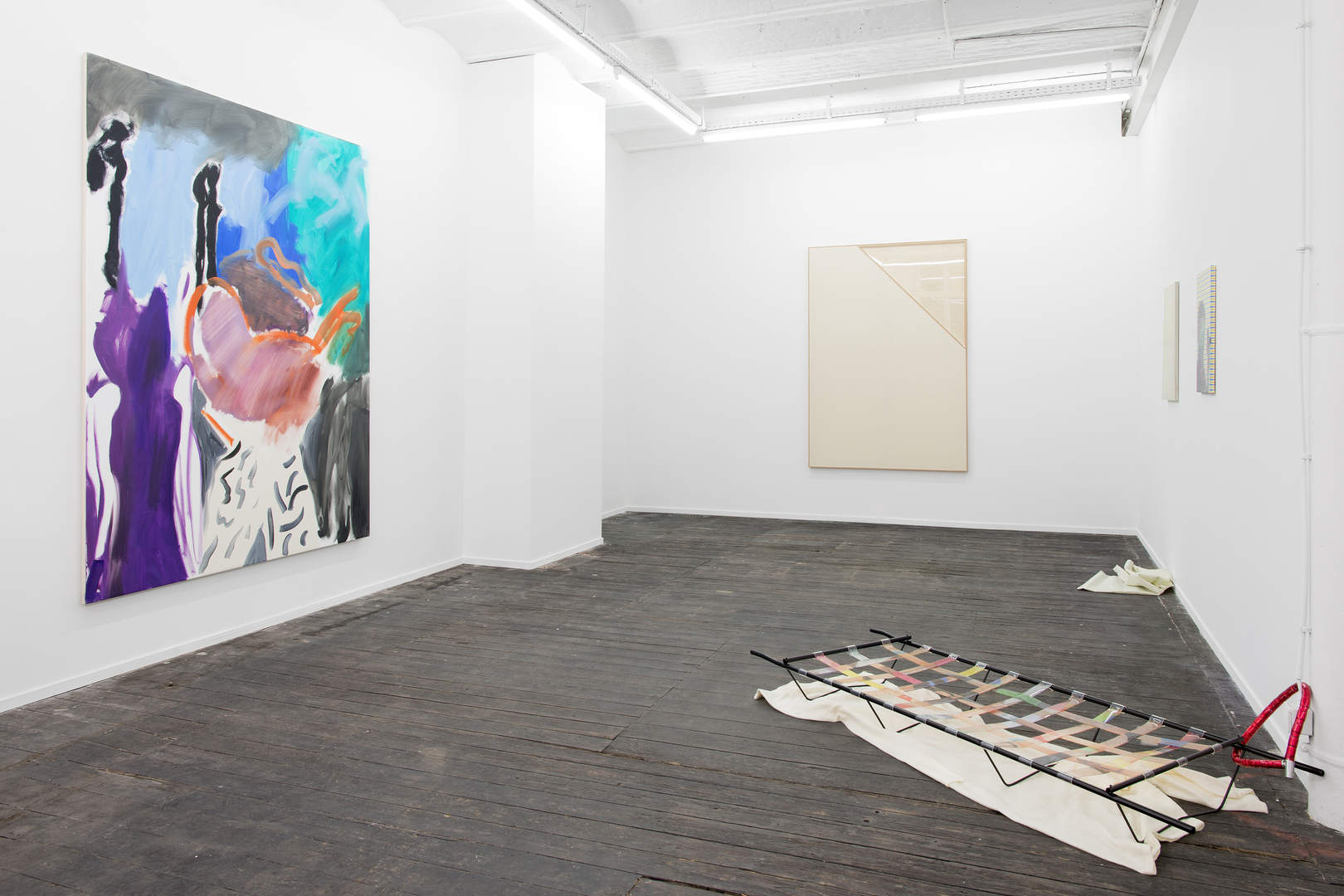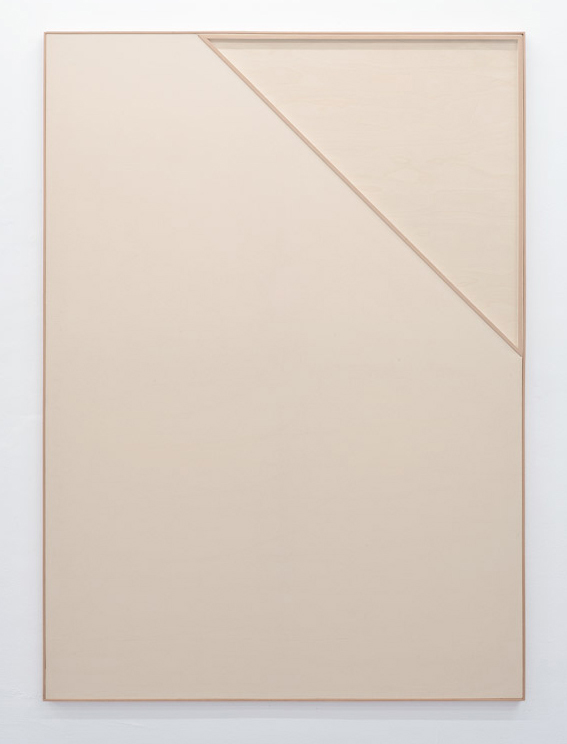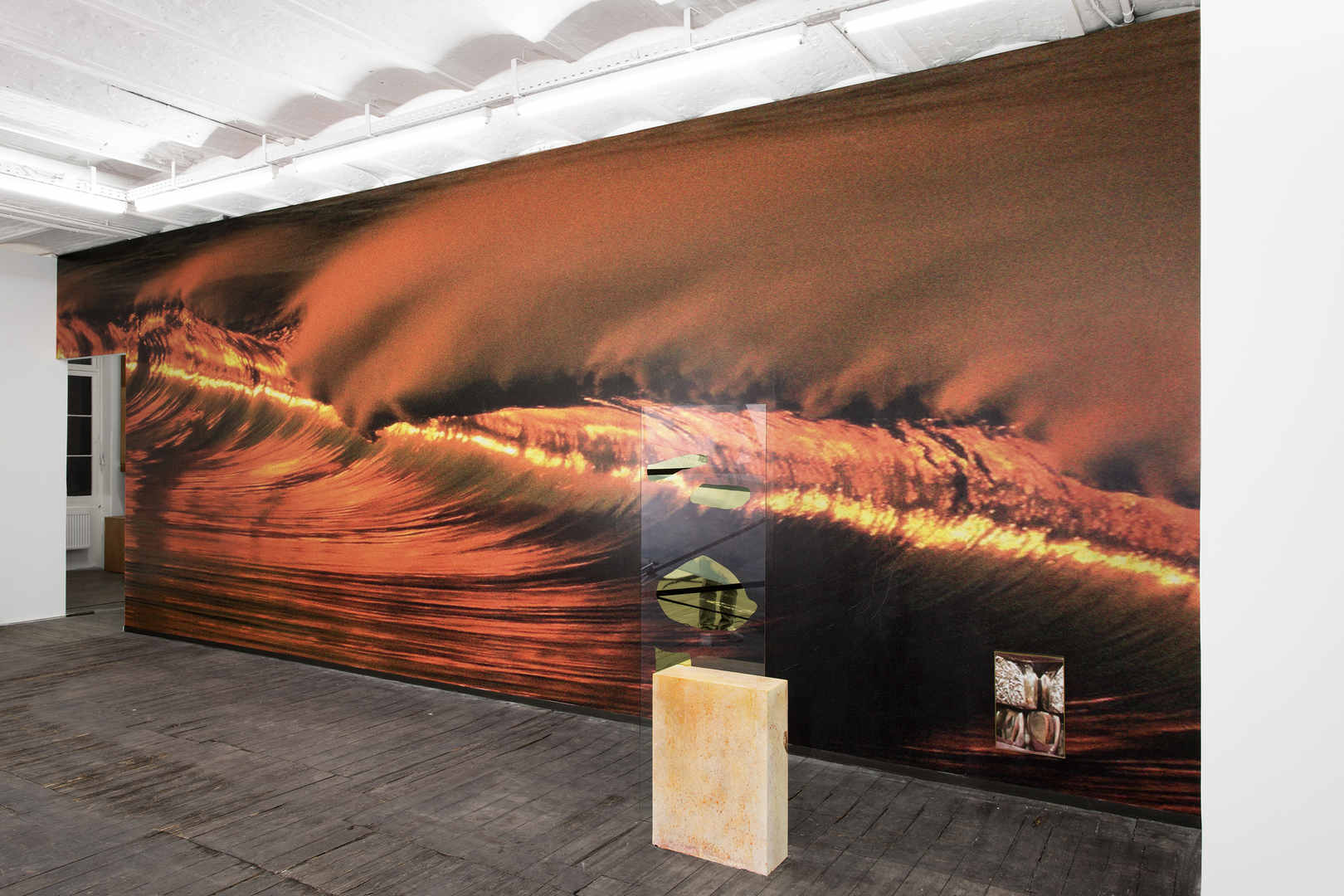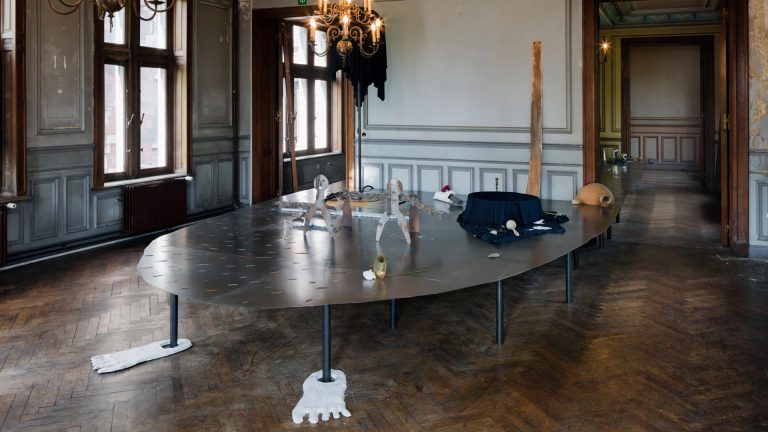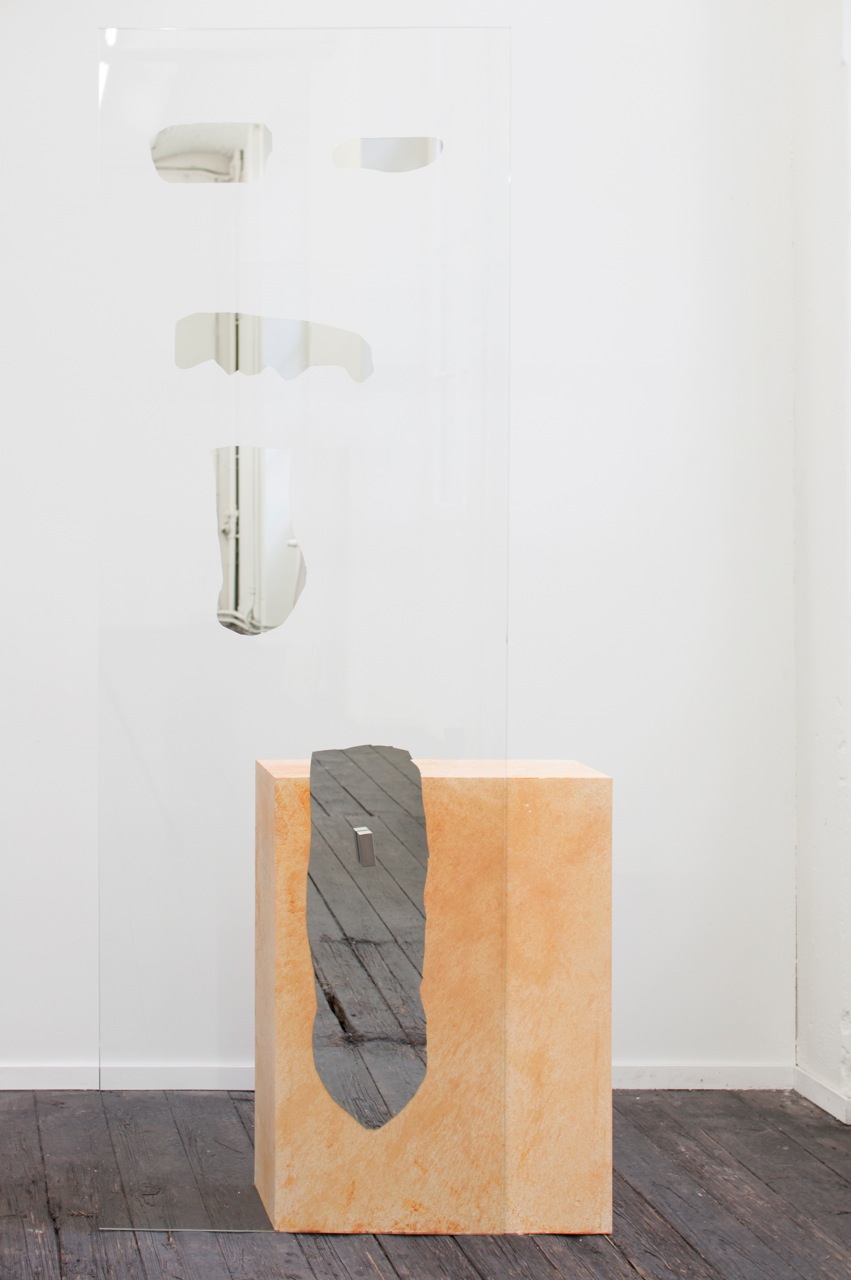
Artists: Stefania Batoeva, Béla Pablo Janssen, Aude Pariset, Loup Sarion, Adrien Vescovi, Mathias Wille
Exhibition title: My Internet Was Down For 5 Minutes So I Went Downstairs And Spoke To My Family. They Seem Like Nice People
Venue: Jeanroch Dard, Brussels, Belgium
Date: January 24 – February 22, 2015
Photography: Hugard&Vanoverschelde. Courtesy of Galerie Jeanrochdard, Brussels
Networked communication, networked games, dating sites, the feeling of closeness, networks of friends, a big virtual family, online information, google search, key word + key word, google image. Control click > Save image as… The exhibiting artists manipulate and push image functions in view of their mass circulation, to explore their malfunctions and the ever growing vacuity of this game of one-upmanship. Technology and digital software have allowed us to let many others into the picture. This has become a reality, a multi-dimensional space made up of increasing and decreasing numbers of layers.
A background. A form. A form. A form. A frame. A colour. A surface. A landscape. Stefania Batoeva, Béla Pablo Janssen, Aude Pariset, Loup Sarion, Adrien Vescovi and Mathias Wille enjoy pushing the limits of its definition and exploring them off-canvas. It is already off the canvas or rather in the transparent background of Adrien Vescovi’s wrapped canvases, a gesture which also sends us back to the question of image being a stylistic figure: a content, a vehicle like feature and an extra.
But the image territory remains that of the frame and its narrative forever engages a form of real pictorial quality. Béla Pablo Janssen’s series, «Le soleil se lève derrière l’abstraction» is a reformulation of the abstract painter’s concerns that the artist enjoys voiding of all definition. Cotton woven canvases stretched onto frames, his works display more attributes of a wooden or glass sculpture than of a painting.
However, in the space, picture and frame impose their form again. The forms made by Aude Pariset and Loup Sarion are presented as drawings. Coming out of transparent screens – sailboards or panes of glass – they capture the light and create a display. In her work, Aude Pariset manipulates the different methods of image use, reproduction and circulation. Using a range of materials such as paper, textiles or plastic, she borrows advertising aesthetics and consumer objects to rewrite a visual language based on efficiency and the optimisation and perception of image. The interfaces are producing an image that has been taken a hundred times, the plastic dream sold to the consumer, like the smooth glass like surface in Loup Sarion’s forms, hiding their reverse and playing an almost mesmerizing role, absorbing the elements which surround them to restructure them.
In the midst of these screen fields, a new, visible flow is taking place. getting quicker, this leads to an accelerated action of doing, grasping. For Stefania Batoeva, it is quick, timed, repetitive. It continues its function and structures itself in time and effort. The stroke becomes the print during a process which makes a narrative of all of its imperfections, an organised layered work, making the surface of its background inseparable.
The question remains of landscape and its extras. The digital designs printed on canvas by Mathias Wille bring software keyboard shortcuts and image treatment plans back to the frame.
A form,a drawing, a cut, an outline. Layer 1, layer 2, layer 3 surfing the large wave or blown away by it.
– Elisa Rigoulet

